REGLASS Research
Because research and technological innovation serve to build the future and to make progress
The Reglass’s research focuses on composites, carbon fiber and resins.
Reglass has reached one of the highest levels of know- how and of realizing quality on the global market. Approximately 8% of produced turnover is being reinvested in research and development. It’s study activities are:
- research on new materials,
- elimination of defects in proceedings,
- improvement and innovation of products.
One particular highlight is the projects developed through collaborations with Universities, Cnr, and regional and international laboratories that have consented – in partnership with big enterprises – to adopt innovative solutions in the areas of aerospace, naval and automotive industry.
In its own laboratories the company has developed several composite materials with diverse typologies of fibers and resins, and is carrying out continuous research to improve the quality, functions and application range through the use of nano materials, nanocoatings, ceramic and metal wrappings, new fiber typologies, metal composite conjunctions, and several other inventions.
Reglass has 22 patents and is included in the list of the laboratories certificated by Miur (the Italian Ministry of Higher Education and Research).
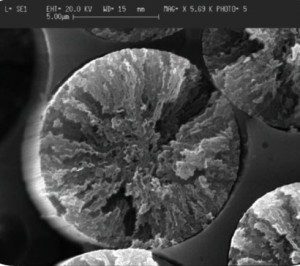
Fiber section

Organic matrix thermosetting
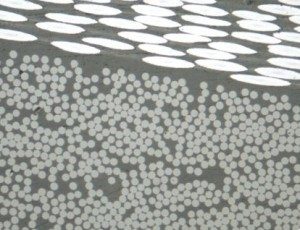
Microscopic fiber
REGLASS AND CARBON FIBRE
Process
It starts with carbon fiber , it is processed with epoxy resins until a pre-impregnated material – called prepreg – is obtained , then cut into sheets of carbon fiber which, through the wrapping technology , are used for various types of applications. of different use from industry to sport to construction.
Raw material
Carbon fiber is a thread-like material made up of chains of carbon atoms and used to produce a large variety of composites, that is, materials consisting of two or more components.
The properties: high mechanical strength, low density, almost no coefficient of thermal expansion, resistance to the effect of many chemical agents, good fireproofing properties.
Reglass uses carbon fibers with the best characteristics and impregnates them using resins of its own formulation. Carbon fibers are divided into two broad categories.
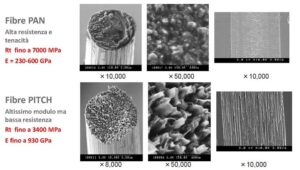
Prepreg, carbon fiber sheet
The process starts with the development of the carbon coils. The threads (yarn, composed of thousands of filaments) are flattened and placed side by side to give shape to a carbon ribbon with unidirectional fibers. The latter then flows into an impregnating machine that penetrates the epoxy resin. The semi-finished product obtained is called Prepreg and is subsequently wrapped in coils that can be stored in cold storage rooms at temperatures of -18 ° C.
Reglass has developed a particular know-how, which ensures an intimate impregnation of the carbon fibers by the epoxy matrix, guaranteeing at the same time an excellent precision in the fiber / resin ratio (within 2-3%).
Thanks to this exclusive Prepreg technology it is possible to produce thin layers with a perfect distribution of tensions. The weight, inertia and thickness are reduced and therefore the ratio between these factors is optimal. The best offered on the market.
The result: a great homogeneity in the behavior of the manufactured article to be built, and an excellent correspondence between the theoretical project data and those detected on the piece.
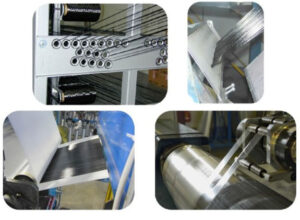
Wrapping, wrapping process
Based on the design of the tubular product to be made, the carbon fiber prepreg is cut into sheets. The pieces thus obtained are wrapped ( Wrapping ) in succession, on a mold, composing the successive layers of winding provided.
 Autoclave
Autoclave
The use of the unidirectional Prepreg allows to apply the fibers in various directions in order to maximize the structural efficiency. The autoclave curing process follows, which further increases the quality and mechanical characteristics of the product because it avoids the possible vacuum zones and compacts the material.
Reglass can then use special prepregs with a woven weave ( Carbon fabric ). These are mainly used outside the roller to protect the underlying layers.
Nanotechnologies and composite products
It’s called Nanolith , it’s an innovative technology based on the use of nanomaterials. Developed by Reglass in its laboratories, since 2008 it has been introduced in the production of fishing rods.
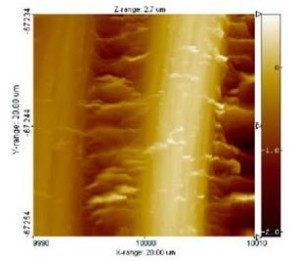
Nanolith technology under the microscope
The nanoparticles are linked at the atomic and molecular level with the surface of carbon fibers and with the resin. The bridging bond that is generated between fiber-nanolith-resin, is able to dissipate the energy of the vibrations and greatly increase the breaking load. Indeed, internal micro-movements are much more pronounced than those of a classic composite. The rigidity characteristics given by the very high elastic modulus of the carbon fibers used remain unchanged.








